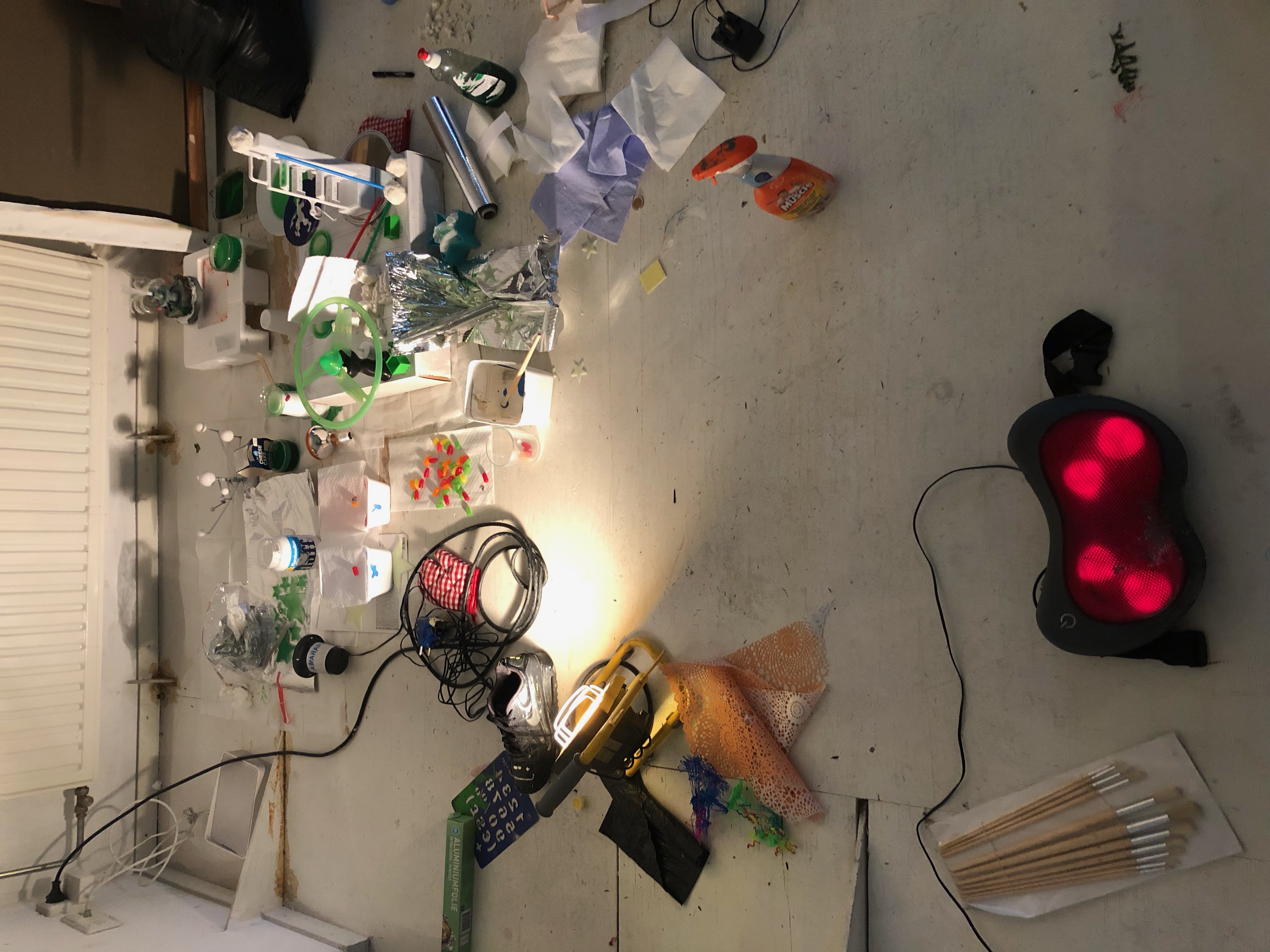19 october 2021, Wouter van den Eijkel
Studio visit: Frederique Jonker
Some art takes time before the viewer understands what they are actually looking at. This also applies to the 4 works by Frederique Jonker that are on display at Galerie Franzis Engels until 23 October. The sublime jumble of drawings, colour fields and graffiti is impossible to comprehend at first, until after about 10 minutes everything starts falls into place and every composition appears to possess an iron logic. In an attempt to understand this logic, we visited Frederique Jonker in her studio.
Jonker’s studio is housed in a former ship in the western harbour area of Amsterdam. She leads us through a maze of steel walls, support structures and doors with rounded corners, to arrive at her studio. A spacious room with a low ceiling, where the scarce natural light enters through 8 portholes. Jonker is happy that she can stay there for at least 5 years and that she does not have face an committee every other week, as is the case with live-in-guardian accomodations. When you enter the studio, you immediately understand why.
Frederique Jonker's career got off to a flying start. Upon graduating from the HKU (2014) and the Frank Mohr Institute (2015), her still lifes of featuring all sorts of devices, such as Fruitflycatcher above, attrackted a lot of attention. During her residency at the Rijksakademie (2016-2017) and the following years, she exhibited a lot. In 2014, Jonker (NL, 1991) won both the Zumberink Prize and the Buning Brongers Prize, among others. That year and again in 2017, she was nominated for the Royal Award for Modern Painting. For the past year and a half she took took the time to reflect on the next steps. Interstellar, a duo exhibition with visual artist Marinke van Zandwijk, is her first exhibition at Galerie Franzis Engels.
Wine glasses filled with coolant
To an outsider, the floor of Jonker's studio is littered with rubbish. Against the back wall is a work table with hundreds of cans of spray paint underneath it. To the right are four wine glasses filled with blue fluorescent coolant, and clear bottles of dishwashing liquid and shower gel in the same shade of poison green, and an automatic fruit fly trap. Enthusiastically, she plugs in the massage cushion she brought from her mother's house, where she spent a lot of time for the past year and a half.
The massage cushion is like a pocket-sized fairground attraction: it moves and has lights that produce a muted red light. “I definitely want to use this one in a work,” she says. “I buy many of the objects and devices that I use from Intertoys and Action. At Action you will always find something, because the turnover of the offer is extremely high. But maybe I did finish Action, because the last two times I went there I ended up buying nothing”.
Goldberg machines on a flat surface
The seemingly unfunctional devices such as the massage cushion and the fruit fly trap are typical of Jonker. In addition to intense colours, she has a penchent for machines in the broadest sense of the word. Her still lifes are therefore a kind of Goldberg machines on a flat surface. In her latest work, Supergirls do cry, she also incorporated elements that she built up with 3D animation software.
Jonker is currently working on a new work, a still life that she composes on the studio floor. It features electrical cords, light bulbs, plastic containers, washing up liquid, coolant and multi-coloured candies. The composition is still too bland for Jonker’s taste. She gives herself a week to finish and photograph it. “The advantage of putting the work together on the floor is that you already make many choices that you no longer have to make while painting”, explains Jonker, “you already know which colour combinations and materials react well to each other”.
Drawing by memory
Except for some taped surfaces and 3D elements, Jonker made the works that are now on display at Franzis Engels entirely from memory. What particularly catches the eye are the felt-tip pen drawings that she often put on the canvas first. Sometimes it is a few different drawings of landscapes and buildings on top of each other, sometimes they disappear under a layer of paint. “When you work like this, elements on the canvas always react to each other, it just happens naturally. You shouldn't think too much about it. At the same time it is very confronting, because everything comes from me”.
What is also striking is that the love for machines extends even further, well into the realm of sci-fi as two of the works feature black holes, aliens, and spaceships. In her studio she says: “The occult has always been part of my work, but it never came to the fore. I learned to draw objects by heart at the Rijksakademie. Now I'm going to take pictures of the still lifes I've assembled in my studio. I stick those photos on the wall and use them as the basis for my new paintings.”

Frederique Jonker haar atelier. Foto: Wouter van den Eijkel.
Interstellar, the exhibition with work by Frederique Jonker and Marinke van Zandwijk, is on display at Galerie Franzis Engels in Amsterdam until 30 October.
On Saturday 23 October there is the possibility to meet the artists at the gallery while enjoying a drink between 5-7 pm.



